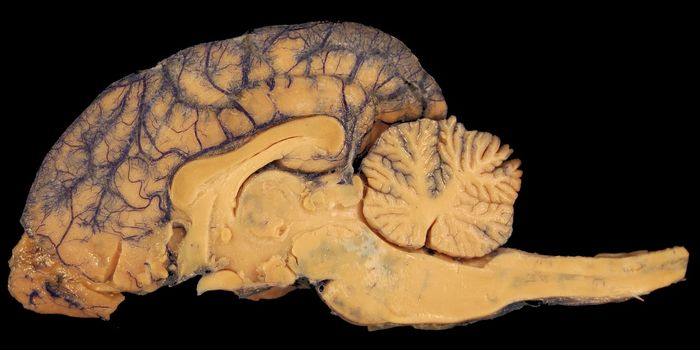The Protein That Orchestrates Cells' Dance of Death
When cells become diseased or infected, a “suicide switch” is triggered, preventing neighboring cells from becoming compromised. This self-destructive process, known as necroptosis, is tightly controlled by a complex network of biochemical pathways. However, certain conditions, such as inflammatory bowel disease, can see necroptosis spiraling out of control with major health consequences. Molecular targets for managing this uncontrolled cell death have so far remained elusive — until now.
A multidisciplinary team of scientists has recently made a huge leap in advancing our understanding of necroptosis, shedding light on a protein controller of cell death called MLKL. In a series of three concurrent publications, scientists from the Australian Walter and Eliza Hall Institute describe critical new insights on the structure, function, and evolutionary origins of MLKL. Significantly, they also reveal never-before-seen links between subtle mutations in MLKL and their effects on human inflammatory disease.
Using a suite of high-resolution imaging techniques, the researchers were able to watch MLKL in action during the cell’s final act. As study investigator Andre Samson describes, "We could see how MLKL changed its location as necroptosis occurred, clumping and migrating to different parts of the cell as the cell progressed towards death."
Additionally, by making genetic alterations to MLKL and rendering it hyperactive, the researchers observed how these variants play a role in exacerbating tissue inflammation. "We discovered this form of MLKL contained a single mutation in a particular region of the protein that made MLKL hyperactive, triggering necroptosis and inflammation," explained study author Joanne Hildebrand.
“By searching genome databases, we discovered similar variants in the human MLKL gene are surprisingly common - around ten percent of human genomes from around the world carry altered forms of the MLKL gene that result in a more-easily activated, more inflammatory version of the protein,” Hildebrand explains.
A look at MLKL’s journey along evolutionary pathways revealed a surprising finding: even closely-related vertebrates such as mice and rats had highly divergent forms of the protein. Katherine Davies, lead scientist on this aspect of the study said, "We think that evolutionary pressures such as infections may have driven substantial changes in MLKL as vertebrates evolved. Animals with variant forms of MLKL may have been able to survive some pressures better than other animals, driving changes in MLKL to accumulate, much faster than for many other proteins.”
"Together with the data for human variations in MLKL, this suggests MLKL is critical for cells to balance beneficial inflammation, which protects against infections, with harmful inflammation that causes inflammatory diseases," Davies added.
This three-part study provides many fresh perspectives on MLKL and is a tremendous boost for scientists searching for therapeutic targets to calm inflammatory storms in a wide range of conditions.
Sources: Technology Networks, Nature.









